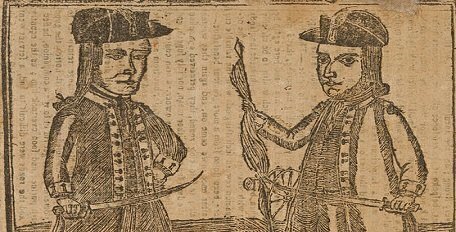On this day in 1786, a popular uprising began in Massachusetts. Shays’ Rebellion was one of several critical events that led to the calling of a Constitutional Convention the following year in Philadelphia.
 Daniel Shays, a former Continental Army captain, led a group of upset western Massachusetts residents who were upset about the way the state government was handling wartime debt and high taxes. In some cases, Army veterans who had never received pay for their service saw their property seized.
Daniel Shays, a former Continental Army captain, led a group of upset western Massachusetts residents who were upset about the way the state government was handling wartime debt and high taxes. In some cases, Army veterans who had never received pay for their service saw their property seized.
On September 2, 1786, Massachusetts Governor James Bowdoin issued a proclamation recapping the scene on August 29, when Shays’ group arrived at the Court of Common Pleas in Northampton.
“A large concourse of people, from several parts of that county, assembled at the Court-House...many of whom were armed with guns, swords, and other deadly weapons, and with drums beating and fifes playing, in contempt and open defiance of the authority of this Government, did, by their threats of violence and keeping possession of the Court-House until twelve o’clock on the night of the same day,” said Bowdoin.
Bowdoin called on “all Judges, Justices, Sheriffs, Constables, and other officers, civil and military, within this Commonwealth, to prevent and suppress all such violent and riotous proceedings.” He also appealed to the residents of the Commonwealth to “aid and assist with their utmost efforts the aforesaid officers, and to unite in preventing and suppressing all such treasonable proceedings.”
The protesters later seized several other local courts after the state government refused to consider debt-relief provisions. Shays then led a force of about 1,500 men in an attempted raid of the Springfield armory on January 26, 1787. The group was intercepted on the day before its planned attack; four protestors died in a brief conflict with the militia and the group dispersed.
The tax protest showed that the weak federal government, under the Articles of Confederation, couldn’t put down an internal rebellion. It had to rely on a state militia led by General Benjamin Lincoln and sponsored by private business people. With no money, the central government couldn't act to protect a “perpetual union” guaranteed by the Articles.
The events leading to and including Shays’ Rebellion alarmed Founders like George Washington, James Madison, and Alexander Hamilton to the point where delegates from five states met in Annapolis, Maryland in September 1786 to discuss changing the Articles of Confederation.
The group in Maryland included Madison, Hamilton, and other Founders including John Dickinson, and it recommended that a meeting of all 13 states be held the following May in Philadelphia. The Confederation Congress agreed and the Constitutional Convention of 1787 effectively ended the era of the Articles of Confederation.
When learning of the rebellion, Washington remarked that it threatened “the tranquility of the Union.”
“If three years ago any person had told me that at this day, I should see such a formidable rebellion against the laws & constitutions of our own making as now appears I should have thought him a bedlamite - a fit subject for a mad house,” he wrote to Henry Knox.
At that time, Washington was leaning against attending the Constitutional Convention, but the impact of Shays’ rebellion and the influence of his friends led Washington to change his mind.







